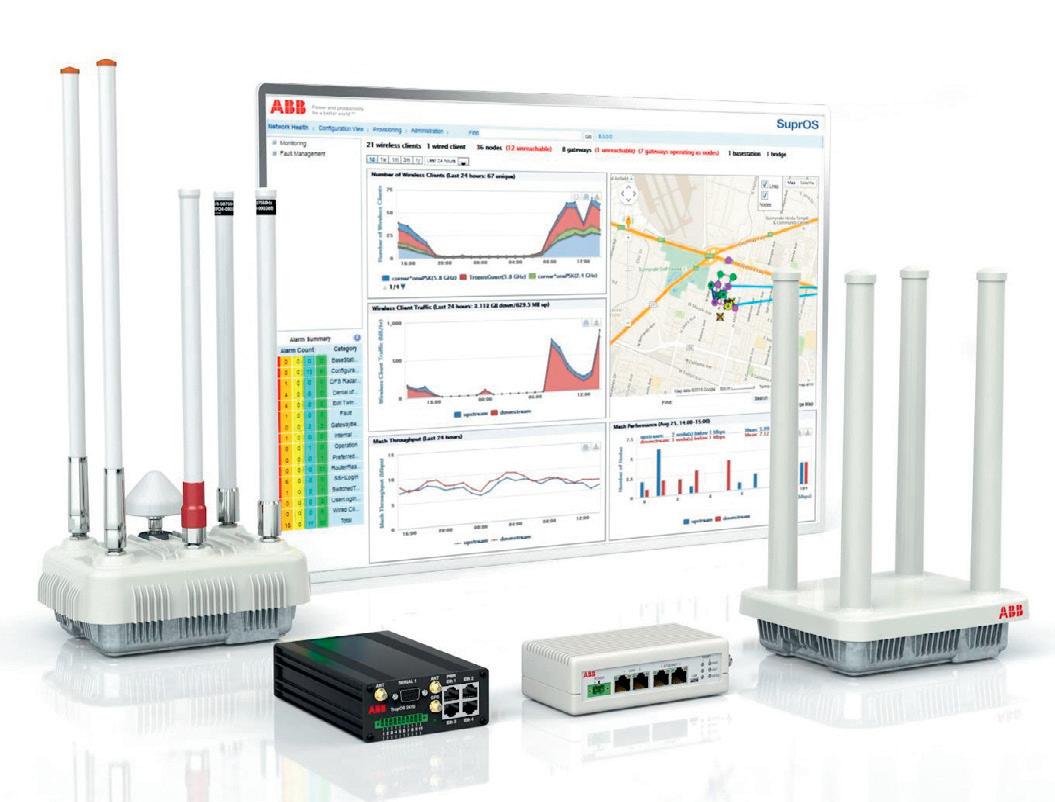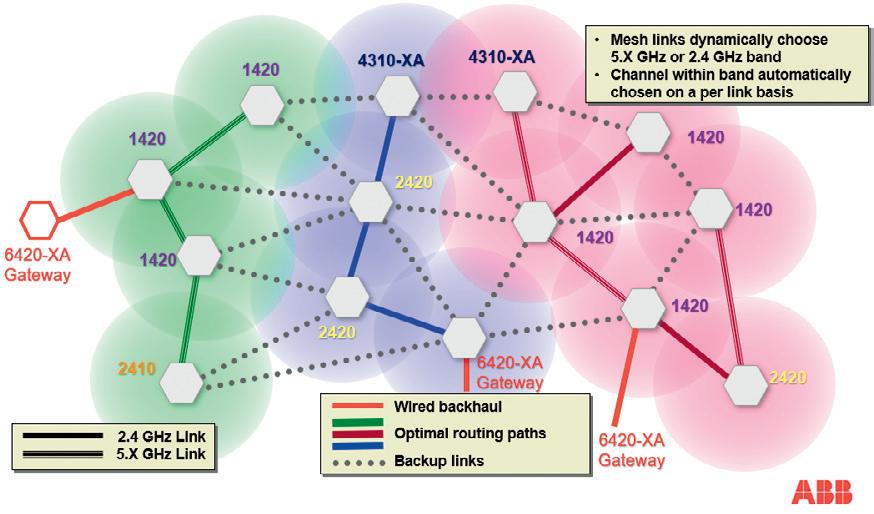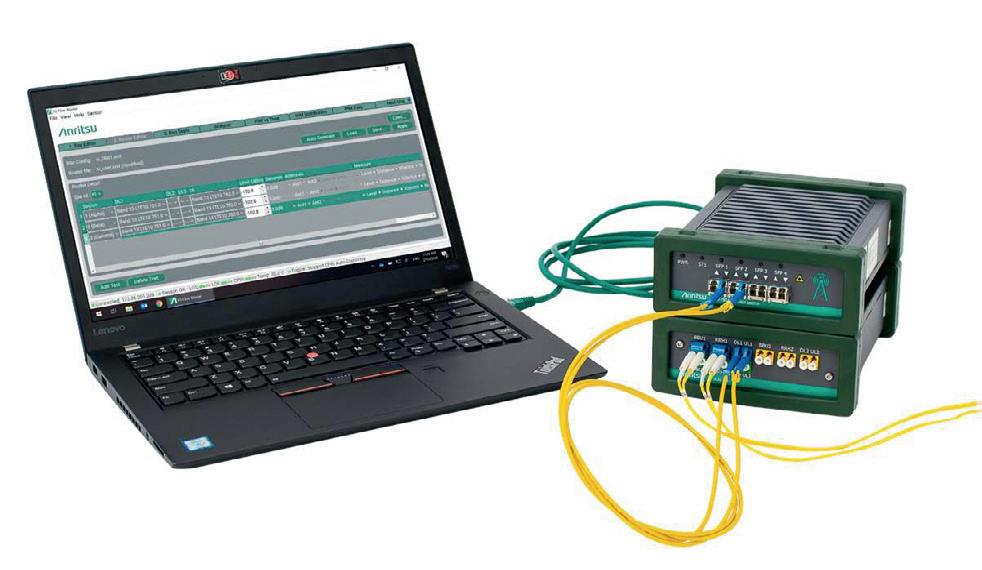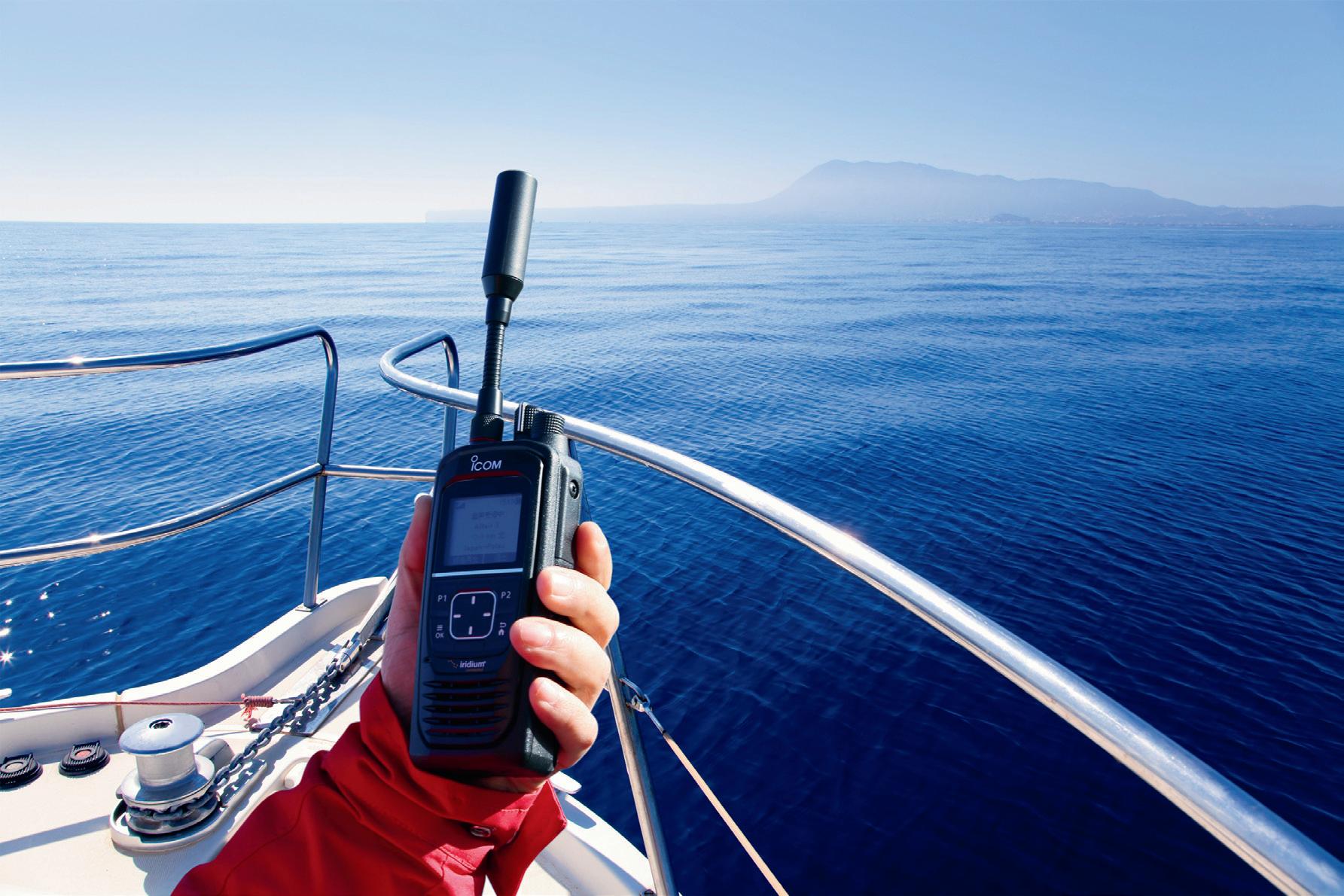
19 minute read
Focusing on the future
FOCUSING ON THE FUTURE Jonathan Nally
©stock.adobe.com/au/iuCheung
The mission-critical communications industry is firmly on the path towards open standards-based broadband solutions. T CCA, a global body representing the critical communications industry, and its Australian regional affiliate, the ACCF, have spent the past two decades or more promoting the development and deployment of standards-based mission-critical communications systems. Both organisations began life focused on the narrowband TETRA standard, but in recent years have broadened their spheres of activity to encompass broadband as it begins to make inroads.
To find out more about the two organisations’ efforts and aims, and where they see various communications technologies heading, we conducted the following Q&A with TCCA’s Chief Executive, Tony Gray, and ACCF’s founding Director, Kevin Graham. TCCA has turned 25 and the ACCF will be 20 next year. What’s the secret of your success? The success to date, and ongoing, was and continues to be based upon the core principles upon which the Associations were founded. TCCA and the Australasian Critical Communications Forum (ACCF), as one of its regional organisations, have drawn together the critical communications ecosystem from around the world, and around Australasia, under a common set of objectives — to drive the development of open standards that address mission-critical-grade user functionality for voice, data and security.
This work involves significant collaboration between key manufacturers and user groups, particularly public safety, to define the essential functionality/user requirements, to advise the standards development organisations and — once commercialisation of products emerges based on the standards — establish a rigorous testing regime to confirm interoperability between vendors. This approach has been proven in the success of the TETRA market, and ACCF and TCCA are working to ensure the emergence of critical broadband follows the same principles. How is TCCA leading or contributing to standards development for LMR and broadband? There are many initiatives underway, but there are a couple of specific examples. For TETRA, the standard continues to be enhanced through the work of ETSI’s TC TCCE (Technical Committee – TETRA and Critical Communications Evolution). This work includes updating the Inter-System Interface specifications, improving the performance of TETRA packet data and developing new security algorithms. TCCA’s Security and Fraud Prevention Group is closely involved with this work.
For critical broadband, TCCA provides technical support for the ETSI MCX Plugtests, which validate the interoperability of a variety of implementations using different scenarios based on 3GPP Mission Critical Services in Release 14. TCCA’s member-driven Broadband Industry Group and Critical Communications Broadband Group are key to gathering industry and user requirements, and TCCA is the 3GPP Market Representation Partner (MRP) for critical communications. This enables TCCA to bring into 3GPP a consensus view of market requirements such as services, features and functionality that fall within the 3GPP market scope. How should industry contribute to achieving robust critical broadband? Stakeholder collaboration is essential — the success of TETRA has demonstrated the benefits of standardisation and cooperation for the benefit of all. The open standards model for broadband is attracting participation from a broad ecosystem of interested parties, and this is evident from the diverse nature of the new members that TCCA and ACCF are attracting, from commercial mobile network operators to application developers.
The critical communications market is very small compared to the number of consumer users of broadband, so a common voice is essential. History has shown that standards development underpinned by the most exacting public safety requirements has been well accepted and adopted across a broad range of other sectors that also require secure and reliable critical voice and data communications to support their business operations. These include utilities, energy, resources, mining, transportation, network operators, industrial, manufacturing and enterprise sectors.

TCCA’S ALLIANCES ACROSS THE CRITICAL COMMUNICATIONS ECOSYSTEM HELP ALL PARTIES TO DEVELOP AND DISSEMINATE BEST PRACTICES.
Why has TETRA been so successful in the Australian mining, oil and gas and long-haul rail sectors? TETRA is the optimal choice for missioncritical users the world over as it provides a complete multiservice and unified system (critical voice and narrowband data), meeting their communications needs, whilst providing high levels of availability and reliability.
TETRA came late to the market in Australia due to spectrum issues but it was quickly recognised by the Australian resources industry that TETRA is a mature and time-proven open standard with competitively priced and interoperable products and solutions from multiple vendors.
How do you see TETRA expanding in Australasia over the next 25 years? TETRA will undoubtedly remain strong in some vertical sectors. DAMM Australia’s announcement last year regarding TETRA VHF frequencies will mean additional benefits such as improved propagation in challenging topographies.
With the release of combined TETRA/ LTE and P25/LTE and hybrid/multi-mode products in Australia and the introduction of private LTE 4G and 5G solutions, true critical broadband for mission-critical use will become a reality over the next 10 to 15 years.
What’s happening in other market sectors in Australasia, such as railways? LMR using TETRA, P25 and DMR remain important and continue to grow across all major user sectors in this region. The Future Railway Mission Critical Standards (FRMCS), based on LTE, will be the nextgeneration standard ultimately replacing GSM-R with a single, secure communications backbone, for trackside and station communications. Mission-critical broadband standards are important for the evolving Industry 4.0, IoT and private LTE use cases emerging in many local sectors.
continues to anticipate and meet industry needs? The ACCF fully supports the TCCA charter. ACCF continues local advocacy and education on global standardisation efforts. Facilitating exchange of information between the local mission-critical fraternity and the eco-systems (including ETSI, 3GPP etc) is important to ensure future solution pathways for local users take maximum advantage of international harmonisation efforts. Local industry support and contribution will be essential in developing local capability and opportunities.
In 2018, ACCF extended its charter beyond TETRA to include other widely adopted standardised LMR technologies, such as P25 and DMR, so future unified solutions including mission-critical broadband can evolve more cooperatively. ACCF has ongoing collaborations with aligned local industry organisations such as the University of Melbourne’s Centre for Disaster Management & Public Safety, ARCIA, Telsoc and INCOSE.
How important are the volunteer Working Groups, member involvement and cooperation between industry competitors? Without the members, TCCA and ACCF would not exist. Their support and collaboration are invaluable in driving the critical communications market forward and many competing manufacturers participate in the same Working Groups for mutual benefit. All TCCA’s Working Groups contribute in different ways to advancing the industry, from the Technical Forum’s management of TCCA’s TETRA IOP process, to the Future Technologies Group horizon scanning for emerging innovations that might be harnessed for the benefit of critical users.
The Global Certification Forum and TCCA are looking at certification for mission-critical broadband. How is that progressing? The joint task force announced in January aims to move certification forward for mission-critical voice, data and video services. The initial actions of the taskforce will be completed during the first half of 2020 and progress will be reported then.
The goal is to develop a mission-critical broadband certification process that will be an evolution of both TCCA’s unique and highly successful TETRA Interoperability and Certification Process (IOP) — which was developed to enable a truly open multi-vendor market for TETRA equipment and systems — and GCF’s certification for 2G, 3G, 4G and 5G devices. TCCA was involved in the MCOP project and is now involved in MCS-TaaSting. Why are they important to the industry? The Mission Critical Open Platform (MCOP) project is all about making it quick and easy for applications developers to bring to market standardised and interoperable mission-critical PTT services, complying with the 3GPP MCPTT standard. It provides an open source API and SDK and has been an important step in the commercialisation of mission-critical broadband.
Once mission-critical services are developed and available, the final stage before market acceptance is conformance and interoperability testing and certification of the various products. Availability of suitable test sets has been an issue up to now, with test equipment manufacturers not seeing adequate volume in the market. Mission Critical Testing as a Service (MCS-TaaSting) will develop an IP-based test engine that will be available via both a cloud service and LTE hardware for the conformance testing of mission-critical applications. This will help to drive the market forward and benefit the entire mission-critical broadband communications ecosystem.
TCCA has formed lots of alliances recently. Does this reflect converging needs across sectors or a sign of a maturing market? Actually, it’s a bit of both. TCCA has always maintained collaborative and cooperative arrangements with relevant complementary organisations. However, with the increasingly widespread application of critical communications across diverse markets and geographies, and specifically as a result of the move towards 3GPP standardisation of mission-critical broadband, the number of interest groups and parties has increased.
TCCA’s alliances across the critical communications ecosystem help all parties to develop and disseminate best practices, and are vital to support and evangelise the use of open standards, which is at the heart of our philosophy.
ABB Wireless. Connecting the unconnected via private wireless networks.


Wireless mesh products from ABB are used to construct private, interoperable wireless IP communication networks for Mining, Utilities, Oil &Gas, Industrial Control Systems.

ACMA ROADMAP FOR BROADCAST RADIO

©stock.adobe.com/au/DedMityay
The ACMA has laid out its priorities for the future delivery of broadcast consumer radio in a report which it says underlines the vital importance of radio to Australian audiences. ‘The future delivery of radio’ details how the ACMA will prioritise the provision of spectrum to best assist broadcasters to serve the Australian community. “Radio plays a critical role in providing news and informing communities in times of emergencies, as we saw during the bushfires and are seeing now with the COVID-19 pandemic,” said ACMA Chair, Nerida O’Loughlin. “We know that the radio industry needs to evolve in response to new technology and changing audience preferences, and the spectrum that the ACMA manages is a key part of that evolution. More info: bit.ly/3athf4R
©stock.adobe.com/au/tong2530

VERTEL DELIVERS WIDE-AREA RADIO SOLUTION A u s t ra l i a ’s l a r g e s t p r i v a t e l y o w n e d telecommunications carrier, Vertel, and wireless communications company Ondacomms have joined forces for a major deal. The firms have teamed up to provide a sophisticated, widearea radio solution for waste management firm Grasshopper Environmental. As part of the deal, the companies formulated a Push-to-Talk over cellular (PoC) solution, tailored to the firm’s operational requirements. Grasshopper’s vehicle fleet was fitted with Telo M5 in-vehicle mobile devices, with the PoC application installed. More info: bit.ly/3bpHDhx
RF and PIM analyser The Anritsu IQ Fiber Master MT2780A is a multi-port CPRI-based RF and PIM analyser that can perform true PIM analysis over fibre and present RF spectrum results derived from IQ data. The MT2780A reduces test costs and time by providing field engineers, field technicians and third-party contractors with a single instrument to conduct RF interference measurements and PIM troubleshooting on LTE-based systems using CPRI front haul infrastructure.
The IQ Fiber Master leverages patented PIM over CPRI and RF over CPRI measurement capabilities that allow tests to be conducted on the ground, significantly reducing tower climbs. Field engineers and technicians can use the MT2780A to scan the uplink RF signals of a remote radio head (RRH) for in-band interference while simultaneously conducting PIM over CPRI measurements. Supporting all Tier 1 LTE base station radio manufacturers, the single instrument solution can determine if KPIs are being affected by interference or PIM.
Analysing CPRI IQ data allows users to view a radio’s uplink spectrum for interference troubleshooting. The IQ Fiber Master measures PIM over CPRI with four SFP inputs, providing the ability to compare multiple bands and sectors, as well. Measurements are performed on live cell tower traffic signals, providing a unique method to conduct real-world testing that results in improved accuracy and no system downtime for test. As measurements are derived from baseband IQ data, the IQ Fiber Master can make measurements on any frequency RRH, or combination of frequencies of the RRH, providing a cost-effective solution.
The IQ Fiber Master analysis results provide a full PIM diagnosis. It will report the presence of PIM, whether it is internal or external, and the distance to PIM. In addition, the unique and proprietary PIM heatmap quickly displays which transmitter contributes the most PIM. This collective diagnosis data shortens the entire PIM hunting exercise by directing field engineers and technicians to the most probable location and cause of the issues.
For ongoing monitoring, IQ Fiber Master can be installed at cell sites to conduct long-term PIM over CPRI measurements and provide analytical information. PIM-related problems, such as intermittent PIM occurring on specific days and times or changes in PIM due to base station load during the day, can be measured in this configuration. Reports of the measurements can be generated and used for comparative analysis.
The IQ Fiber Master MT2780A also serves as a band-less PIM testing solution that can be a carrier’s first test tool when identifying an interference problem and its location. This helps to determine the most efficient course of action to follow.
All LTE bands are supported by IQ Fiber Master MT2780A. Extremely compact and lightweight, it weighs only 1 kg and fits in the palm of the user’s hand.
Anritsu Pty Ltd
www.anritsu.com



In my last article I wrote that the bushfires across Australia were the most devastating event imaginable. It seems like 12 months ago now. The really hard part is that the communities so badly affected by the fires were all looking forward to mid-year bookings to bring some funds in, but, as we have seen, the COVID-19 isolation guidelines have robbed them of the travelling public. It must be so hard for them.
The impact of COVID-19 on our country is profound, and yet we are the lucky ones — when we consider the problems that have besieged the rest of the world, our difficulties are not quite so bad. However, there is one area that ARCIA is very concerned about, and that is the retention of technical staff. The federal government’s JobKeeper scheme to enable employers to retain their staff is important, and as we come out of the depths of the economic downturn all those technicians and technical staff are going to prove vital.
Since the outbreak began, ARCIA has been in regular contact with the ACMA about the impact on the communications industry. While many ARCIA members are involved with ‘essential services’, there are also members who are focused on the event and hire sectors… and like so many others, they have been particularly badly affected.
Initially we had concerns that many users would simply not pay their licence renewals and that this would result in many cancelled licences and high levels of confusion as we came out of the other side, plus a high workload for all involved in spectrum management. ARCIA has written to the ACMA and the federal Minister for Communications about the apparatus licence fees, pointing out that they are a major cost that could be delayed while we get through the effects of COVID-19. We would like to thank the ACMA for listening to our position and we note the ACMA did quickly set up a helpline and processes for any licence holder who needed assistance with spectrum fees. This is just one of the ways in which ARCIA can help our industry and many other industries to recover and help our nation grow again, and a reflection of how wireless communications is an essential service.
For many members who provide those essential services, the challenge is how to operate under a ‘new normal’, protect staff and ensure networks and systems keep working. The ARCIA committee, recognising the potential difficulties, has therefore decided to limit our events to minimise expenditure for our members. As a result the annual dinners in Sydney, Brisbane and Adelaide have all been cancelled, and our premier event in Melbourne is under a ‘watch and act’ status — if we can justify it, then we will run it.
There has also been a decision to extend Association memberships and partnerships into the new financial year to keep member and partner expenses as low as possible. We recognise that when things are tight every dollar counts, and by extending memberships our members will continue to get the benefits from being part of the group without having to compromise other outlays.
On a final note, the Western Australia events back in March were well attended and the Comms Connect conference offered some great topics and content — but what a great pity that there was basically no radiocommunications content. If our suppliers and our members want the radiocommunications industry to continue and thrive, then we must provide relevant content for our industry conference, Comms Connect — it is our collective responsibility!
As we have worked our way through these difficult times it has become apparent that there are still many issues where ARCIA is working on behalf of its members, and the fight for our industry and our spectrum continues. I hope you stay safe and well through this pandemic and I hope soon we can return to some kind of normal.
Intelligent I/O gateways The ADAM-6700 series are intelligent, I/O-integrated gateway devices with a unique all-in-one design. They perform data collection, storage, processing, calculation and analysis locally. With 24/7 online equipment monitoring, these gateways provide measurable advantages in predictive maintenance as well as minimal downtimes.
ADAM-6700 series gateways have Linux OS installed and feature a built-in small footprint Node-RED graphical programming toolset. The devices support all commonly used industrial IT/OT interfaces and have a built-in I/O interface. This interface collects analog and digital data from temperature, humidity, vibration, water levels, current and pressure sensors and then executes digital and analog output instructions such as turning on/off lights or power switches.
If an abnormality is detected, the ADAM-6700 series gateways can trigger an alert and send email notifications immediately. The gateways support Ethernet, Wi-Fi, 3G, 4G and other network communication protocols. Once the data is processed and analysed, it is transmitted directly via SCADA, database or cloud service providers for AI deep learning and other advanced applications.
Target applications of the ADAM-6700 series include factory management, environment monitoring and management, and energy management.
Advantech Australia Pty Ltd
www.advantech.net.au
Rackmount online UPS The Vertiv Liebert GXT5 rackmount online UPS is designed to ensure availability within mission-critical small IT environments and edge locations that enable important emerging applications — such as 5G, virtual and augmented reality, and the Internet of Things.
The UPS has a power factor of 1.0 on all models, providing more real power for the user, and is more efficient in both online (up to 95%, according to the company) and Active ECO mode (up to 98%). All models are ENERGY STAR 2.0 certified, and are currently available in capacities from 750 VA to 10 kVA, 230 V.
The product offers a three-year full coverage factory warranty for the UPS and battery. The system also is available with the company’s extended warranty and other service packages to support individual user needs.
Vertiv Co
www.vertivco.com
Satellite communications for safety at sea

Icom’s IC-SAT100 satellite PTT radio covered the 1,726-nm Yokohama-to-Palau yacht race with one-to-many communications.
Staying connected when out in the ocean is of utmost importance. That’s why to avoid perilous situations, it is recommended that ocean race participants (especially those in longdistance races) carry satellite phones. However, a standard satellite phone uses geostationary satellites and may experience communication difficulties when a user makes a call to a race yacht on the ocean. In addition, satellite phones are for one-to-one communication and take a long time to share information with everyone. On the other hand, VHF marine radios are not suitable for long-distance communication, and some require complicated license applications. Therefore, the organisers of the 2020 YokohamatoPalau race needed a more efficient and reliable communication tool, and they found it in the IC-SAT100, Icom’s satellite PTT radio. The event was a 1,726-nautical mile, longdistance yacht race from Yokohama to Palau, held from 29 December 2019 to 20 January 2020, to commemorate the 25th anniversary of Palau’s independence. The communications plan called for a single talk group and long-distance range for the twice-daily roll call. One IC-SAT100 (plus a spare for backup) unit was used by the organisers based in Yokohama (where, for in-building use, an external AH-40 antenna was used when needed), plus there was one aboard the escort ship, and one each was carried aboard each of the seven yachts. The IC-SAT100’s one-to-many communication capabilities are activated by a simple push of the transmit button. The disaster-resistant and real time communication system uses 66 low-Earth orbit Iridium satellites. The satellites are nongeostationary, so users do not need to be concerned with the satellites’ locations. In addition, the satellite PTT radio does not require a license, needs no qualifications and does not need to be registered. During the roll calls, the race participants reported their location, wind direction and any difficulties with their yachts. For previous races, the organisers and participants had used standard satellite phones, but this meant it took a long time to complete the roll calls because standard satphones are suitable only for one-to-one communication. It also meant that real-time information sharing could not be achieved. In contrast, the IC-SAT100 offers one-to-many communication, so the roll call time was greatly reduced and organisers could share timely information with all race participants. At one point there was a severe storm and the ocean became very rough. Fortunately, the organisers were able to inform race participants of the weather in advance using the IC-SAT100. The satellite PTT radio gave organisers the ability to share the storm information in real time and be prepared in case the worst situation, an accident, should have occurred, in which eventuality a nearby ship would have been alerted and sent to the sailor’s rescue. The IC-SAT100 provided two unexpected bonuses. One was that it contributed to the excitement of the race. When receiving a signal, the IC-SAT100 shows the transmitter’s position information direction and distance on the display, so each of the race participants could know where they and the other participants were ranking in the race. The other was that because the IC-SAT100’s audio was so clear, the organisers could detect the emotions in the participants’ voices and help them to determine the sailors’ mental states. This made it much easier to take care of the participants and improve the overall safety of the race. In summary, Mr Ken Ando, organiser of the race, said that the IC-SAT100 provides “An epochal system that can timely grasp the position information of yachts and immediately share it with everyone.” Features of the IC-SAT100 include: • Wide-area global communications • Real-time, low-latency communications • Waterproof, dust-tight and durable body • Long-lasting battery • Secure conversations with AES encryption • Short Data Message function • Integrated GNSS receiver • SMA-type connector for an external antenna For more information, please visit www.icom.net. au or email us at sales@icom.net.au.










